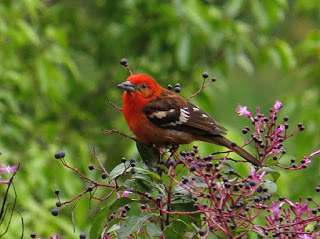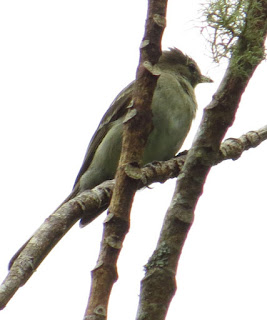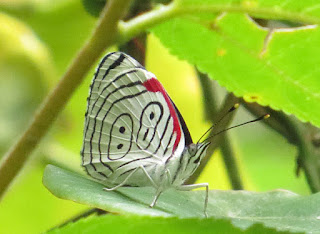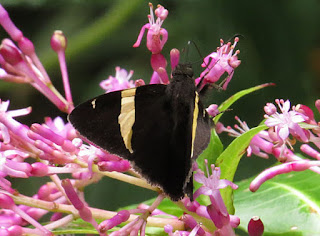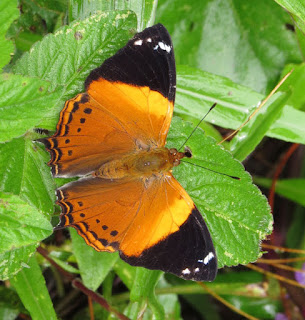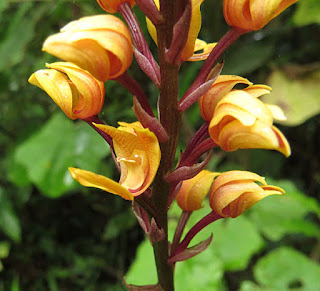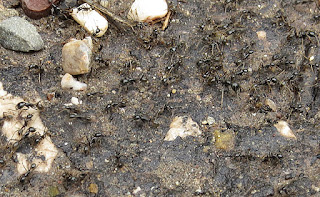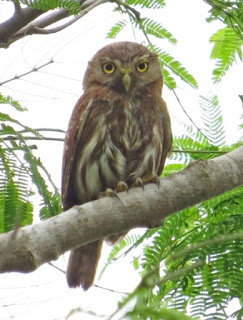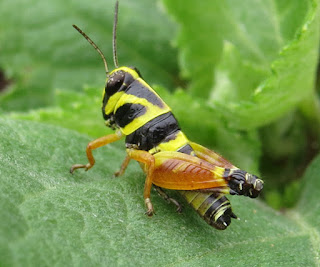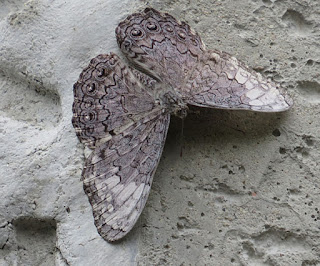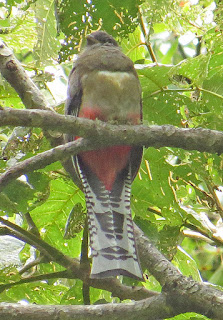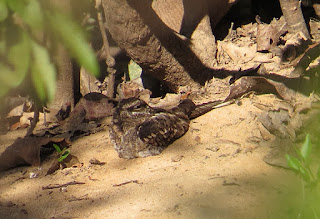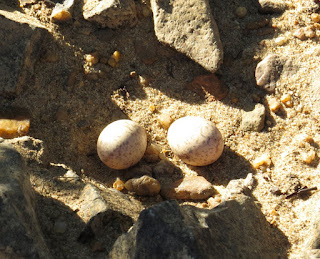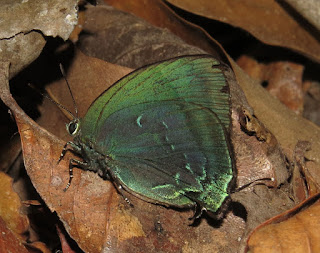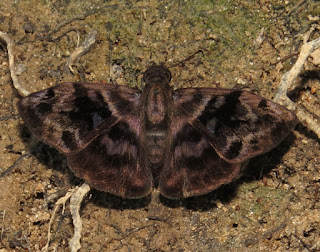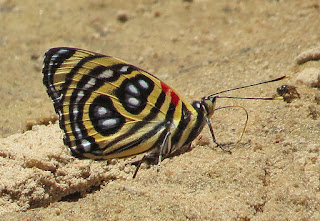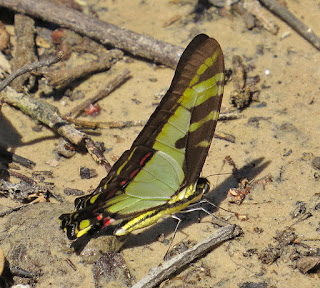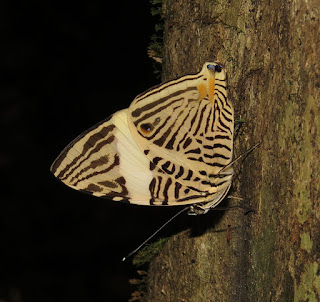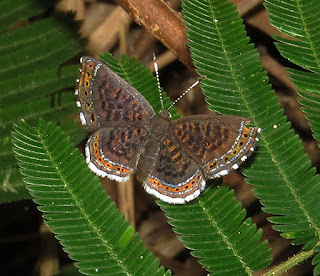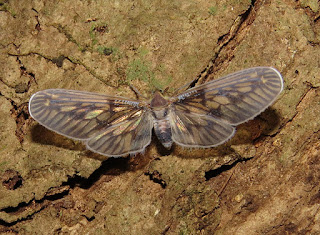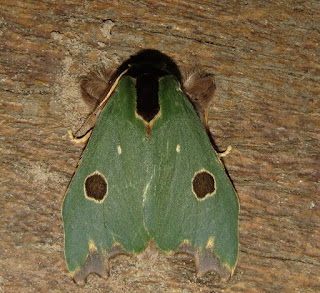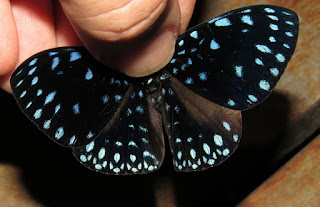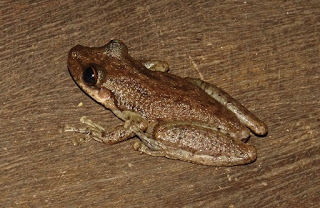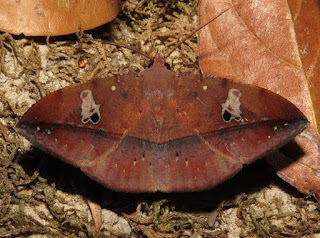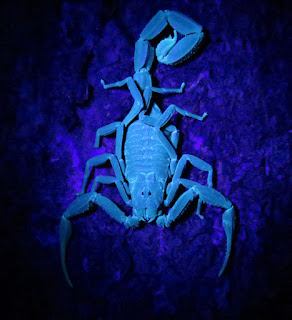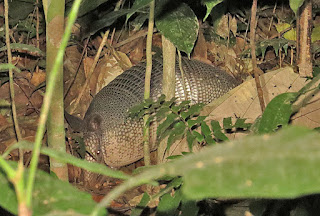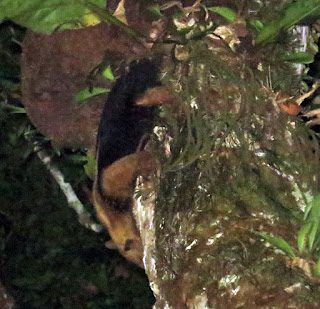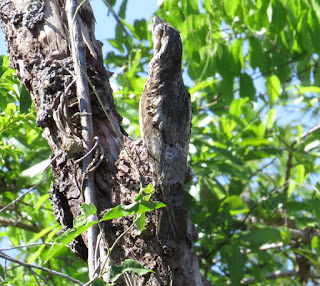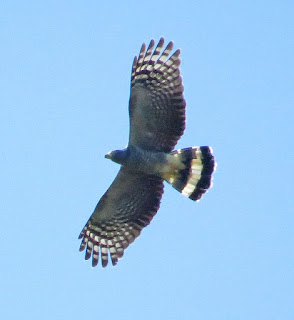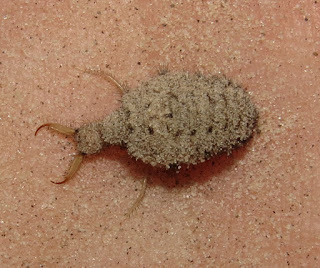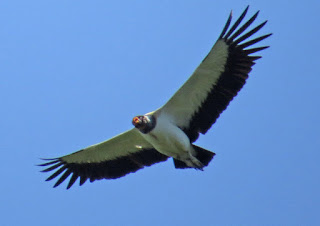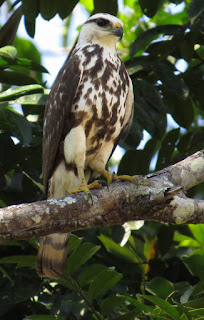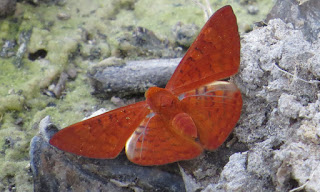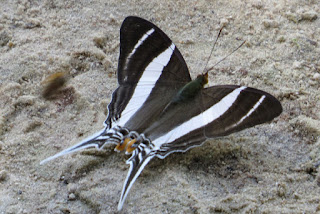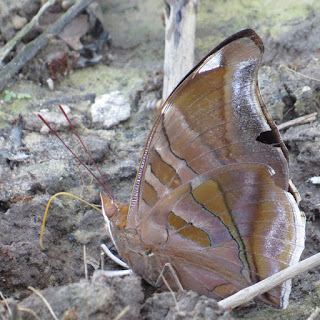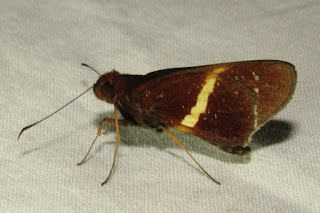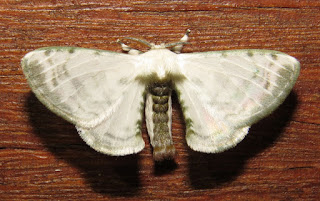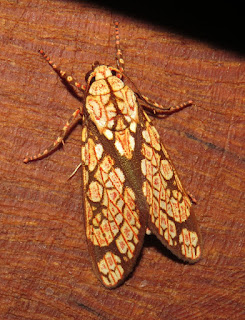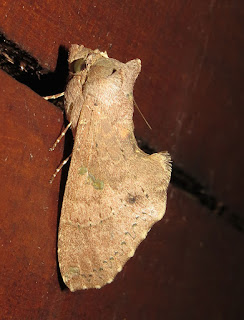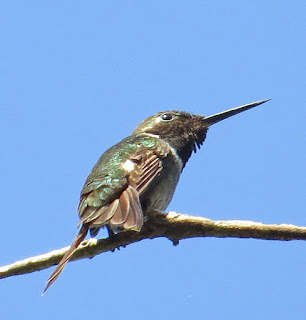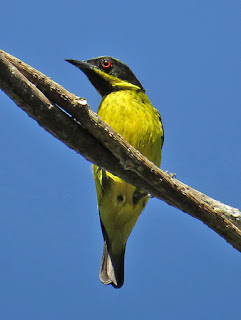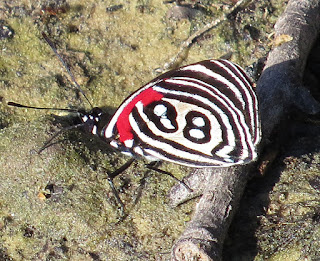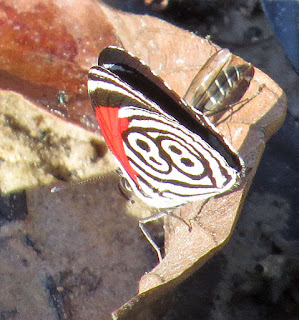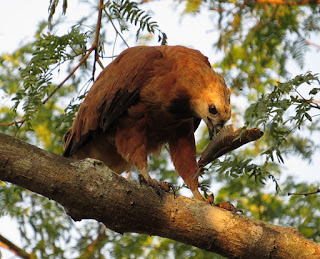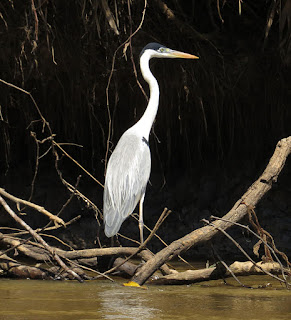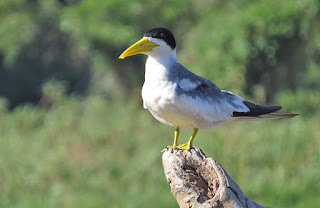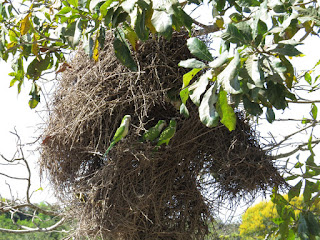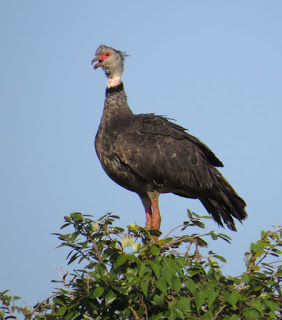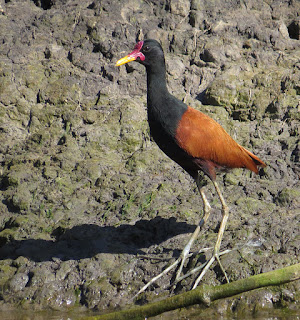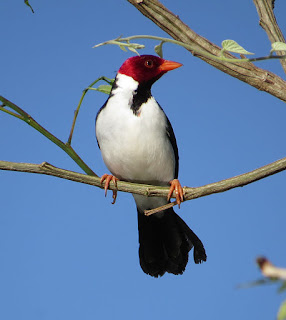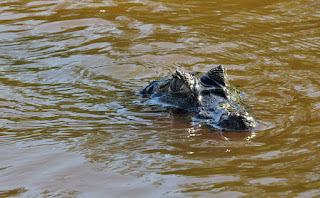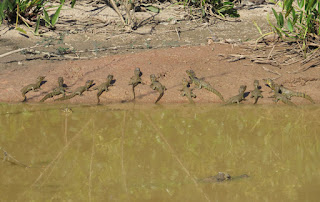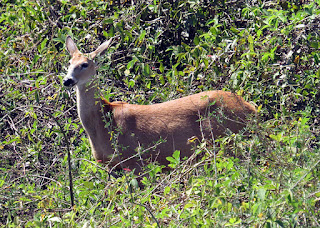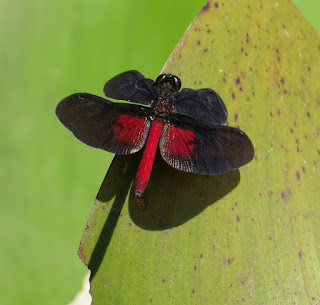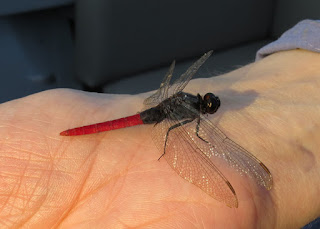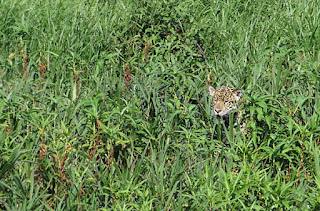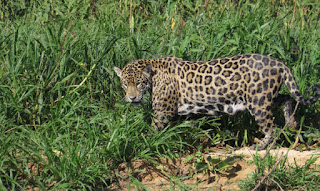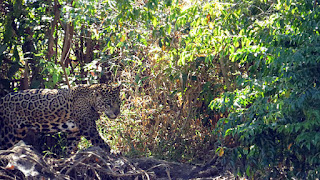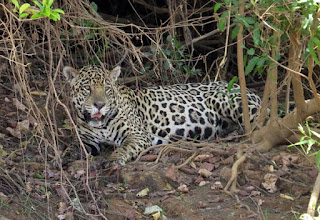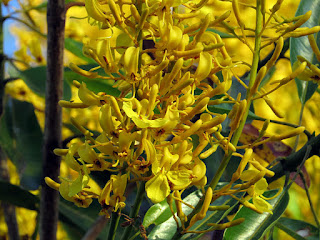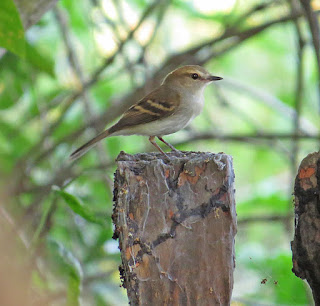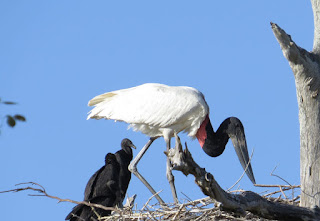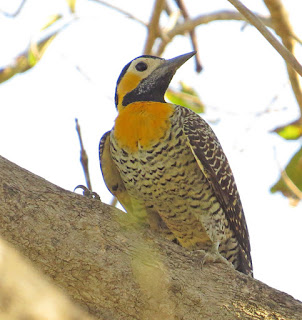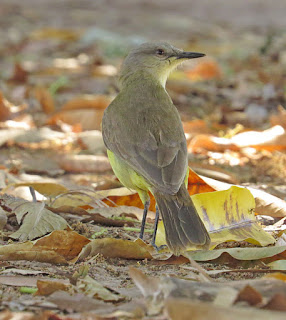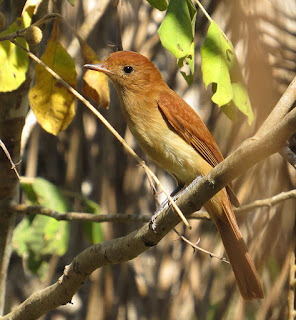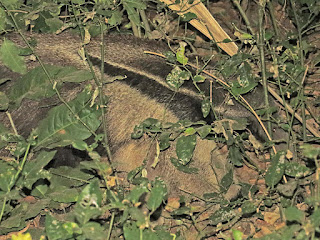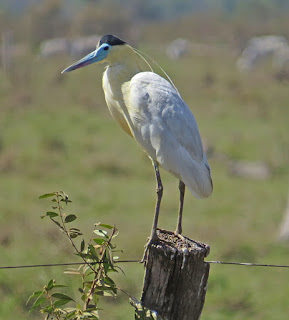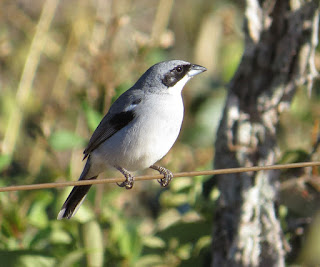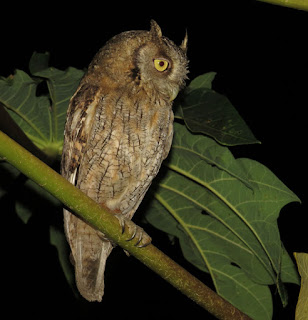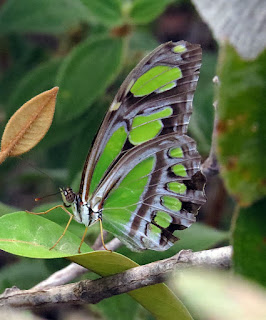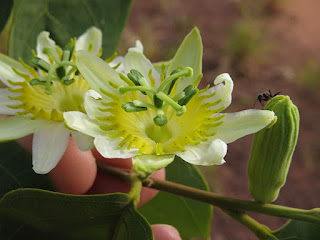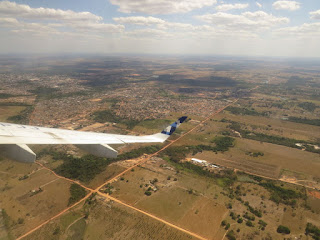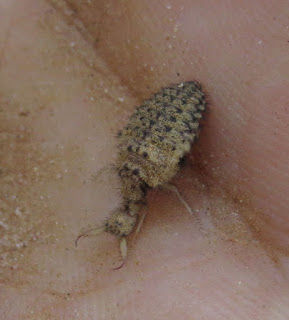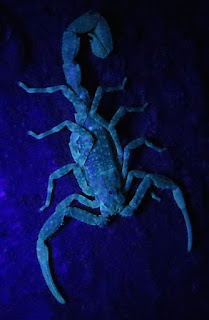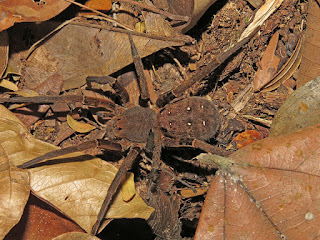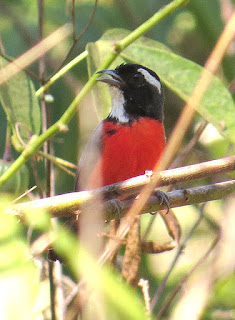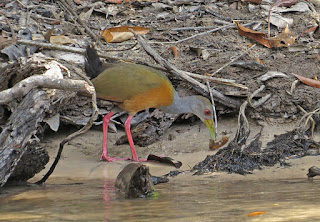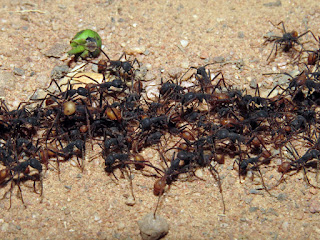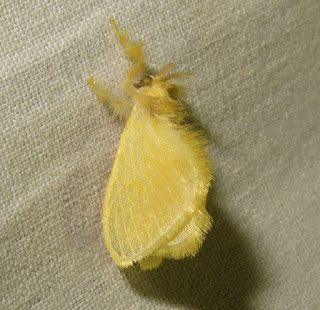August 7, 2015
We started at dawn this morning with a boat ride down to the mouth of the Cristalino River then downstream on the Teles Pires River to Ariosto Island. We got out at a random-looking steep beach, quietly clambered up into the short forest, walked about 20 seconds and stood there. Within about 15 minutes we were looking up at an Amazonian Umbrellabird with its crest fully extended over its bill. Another 3 or 4 were in the branches in other directions, some only briefly visible. It was great to see such an amazing bird at close range.
We then visited the nearby sandy islets where Ladder-tailed Nightjar nests, and we flushed one off her two eggs. Large-billed Terns were also nesting there, and Black-collared Swallow was found with little difficulty over the rocky rapids just across the channel.
We then walked a very quiet forest trail through igapóforest, a seasonally flooded forest on poor soils. We did get glimpses of a Zimmer’s Tody-Tyrant (a specialist of this habitat) and great views of a pair of White-flanked Antwrens. It was getting hot in the canopy, and this is when the fancy hairstreaks come to the forest floor. This big one is a Theritas sp., perhaps not identifiable with certainty.
It was surprising to see a frog active in mid-day. This Osteocephalus sp. tree frog bounded right through the middle of our group and tried to blend in on this tree trunk.
At the boat ramp before heading back to the lodge, I took photos of the skippers coming to the wet sand. This is Carrhenes santes, I think a new record for the lodge.
This is Ebrietas anacreon, the Common Bentwing.
Every late morning a dozen or more Dusky-billed Parrotlets gather on the bank of the Cristalino River right by the lodge, and this morning we stopped for a photo op.
While most of my group took naps for the afternoon, I did my usual round of mid-day butterfly puddle party checks, as try to re-find a pair of Crested Owls that had been found on a day roost down one of the trails a couple days earlier.
This Callicore pygas, Pygas Eighty-eight was by the boat ramp.
This Neographium thyastes, Orange Kite-Swallowtail, is one of the scarcer members of the family.
On the trail to where I did not see the owls I stopped for this Colobura dirce, Dirce Beauty.
This metalmark is a Detritivora sp., probably not identifiable to species with just a photo.
This hairstreak is apparently Michaelus joseph, probably a new one for the lodge.
This planthopper in the family Derbidae was on a tree trunk.
I flushed this moth from the same tree, and it appears to be a Crambid.
I found this butterfly chrysalis next to the trail, but I guess I’ll never know what kind of butterfly it will become.
The group’s late afternoon outing was to Tower II, which typically quiet, but we managed to see a few things, such as this Black-bellied Cuckoo.
Today was Carolyn’s 46th birthday, and the lodge kitchen baked this cake for her. The food here has been astoundingly great.
For the group I offered a night walk, first starting on the floating deck, then moving to the rocky shore to look at fish, and then a short walk down a forest trail.
This moth is probably Eulepidotis viridissimus, found coming to the lights on the wooden boardwalk to the boat dock.
The closest matching photo for this moth is Rosema maximepuncta, a member of the family Notodontidae.
In the same area, attracted to the boardwalk lights, was this male Hamadryas laodamia, Starry Night Cracker.
This rather short-winged moth with oddly-shaped antenna might be in the obscure family Mimallonidae.
I then set out to check the moth sheet that is a short distance into the forest, first seeing this tree frog, Scinax ruber, on the deck by the restaurant.
There wasn’t much at the sheet, but I did take a photo of this cicada.
This moth on the ground nearby appears to be in the genus Gorgone.
There were some cool things down the trail to make it interesting enough, such as this Odontomachus sp., a trapjaw ant.
I spotted this Pyraloid moth on the tower.
With the help of my ultraviolet flashlight, I spotted this Tityus sp. scorpion
It looks very different with my LED headlamp.
One fungus I spotted in amongst the leaves was this Xylaria sp., which appears to have a second fungus, a mold, growing around the base of it.
But this evening biggest excitement came from the mammals – I had six or seven species, though not all identified, and only two photographed. It’s a good night to see just one mammal in this forest. It started with the Azara’s Night Monkeys right after dinner by the restaurant. Then with the small part of my group interested in a short night walk, we spotted a spiny rat (not a true rat but more closely related to porcupines), followed some unidentifiable tiny mouse by the river bank. The group headed to bed while I continued on the trail and found two Nine-banded Armadillos.
A bit farther down the trail, I spotted the eye shine of a Kinkajou high in a tree. Then something walking in the forest, crunching leaf litter got closer and closer, and I could eventually see it was a South American Tapir! It proceeded to approach the trail and cross it not 5 yards in front of me, the closest I've ever been to one. Another tapir was right behind it, but it never did come out so boldly.
I then glimpsed yet another unknown species of mouse bounding away on the ground, saw another Kinkajou high overhead, and then heard the telltale falling rain of debris from above indicating a foraging Southern Tamandua. I managed a grainy picture of at least this critter. What a night!
I was back in my room at 11:50 p.m., but only that early because I knew I had to get up early the next day. Who knows what I would have seen if I had continued into the morning hours.








